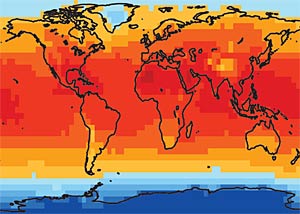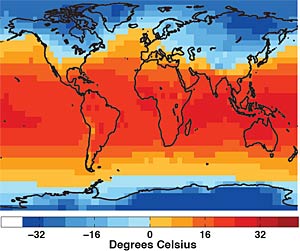There is a movement afoot in the Philippines to actually fuel a long abandoned Nuclear power plant. It was built but never fueled because nuclear power makes no economic sense. The fuel is too expensive, and creating the fuel is so lethal as to be largely unthinkable. But in this particular case…much like the nukes in California built on earthquake fault zones…the Philippines in general is sooooo close to the water table as to invite the China Syndrome. For those that relate that to a mildly entertaining and scary movie
http://www.imdb.com/title/tt0078966/
http://www.youtube.com/watch?v=5FxtBJ59Jm8
http://www.youtube.com/watch?v=pnDBXGb6Nn8
The reality of the China Syndrome was suppressed at Three Mile Island where at least a 1,000 people died and 1,000s more were sickened in a 5 state region in New England:
http://www.youtube.com/watch?v=Fmmdh8Xlbvg&feature=related
It was never confronted at Chernobyl where 10s of 1,000s died and 100s of 1000s of people were sickened worldwide:
http://www.youtube.com/watch?v=101OEaksU0s&feature=related
Where unbelievably 3 Nuclear Reactors still operate today…next to a Lake..
So why intheworld would you want to fuel a reactor built in 1976 on an island near the sea in a tropical jungle? Because it cost 2.6 billion $$$ to build (thanks Ferdinand Marco…where do you think his wife got those shoes) and which is still costing the people of the Philippines 155,000 $$$ a day. As the song says, Money Money Money:
http://www.youtube.com/watch?v=WCkOmcIl79s
http://www.youtube.com/watch?v=9O8gTib5rnw
But let’s start at the beginning, I was 22 in 1976 and working at Powerton, a Com Ed coal fired powerplant in Pekin, IL.
http://en.wikipedia.org/wiki/Bataan_Nuclear_Power_Plant
Bataan Nuclear Power Plant
From Wikipedia, the free encyclopedia
Bataan Nuclear Power Plant is a nuclear power plant, completed but never fueled, on Bataan Peninsula, 100 kilometers (60 miles) west of Manila in the Philippines. It is located on a 3.57 square kilometer government reservation at Napot Point in Morong, Bataan. It was the Philippines’ only attempt at building a nuclear power plant.
[edit] History
The Philippine nuclear program started in 1958 with the creation of the Philippine Atomic Energy Commission (PAEC) under Republic Act 2067.[1]
Under a regime of martial law, Philippine President Ferdinand Marcos in July 1973 announced the decision to build a nuclear power plant.[1] This was in response to the 1973 oil crisis, as the Middle East oil embargo had put a heavy strain on the Philippine economy, and Marcos believed nuclear power to be the solution to meeting the country’s energy demands and decreasing dependence on imported oil.[2]
Construction on the Bataan Nuclear Power Plant began in 1976. Following the 1979 Three Mile Island accident in the United States, construction on the BNPP was stopped, and a subsequent safety inquiry into the plant revealed over 4,000 defects.[1] Among the issues raised was that it was built near major earthquake fault lines and close to the then dormant Pinatubo volcano.[2]
By 1984, when the BNPP was nearly complete, its cost had reached $2.3 billion.[2] A Westinghouse light water reactor, it was designed to produce 621 megawatts of electricity.[2]
Marcos was overthrown by the People Power Revolution in 1986. Days after the April 1986 Chernobyl disaster, the succeeding administration of President Corazon Aquino decided not to operate the plant.[1][3] Among other considerations taken were the strong opposition from Bataan residents and Philippine citizens.[1][3]
The government sued Westinghouse for overpricing and bribery but was ultimately rejected by a United States court.[4]
Debt repayment on the plant became the country’s biggest single obligation, and while successive governments have looked at several proposals to convert the plant into an oil, coal, or gas-fired power station, but all have been deemed less economically attractive in the long term than the construction of new power stations.[2]
Despite never having been commissioned, the plant has remained intact, including the nuclear reactor, and has continued to be maintained.[2] The Philippine government completed paying off its obligations on the plant in April 2007, more than 30 years after construction began.[2]
On January 29, 2008, Energy Secretary Angelo Reyes announced that International Atomic Energy Agency (IAEA) 8-man team led by Akira Omoto inspected the mothballed Bataan Nuclear power station on rehabilitation prospects. In preparing their report, the IAEA made two primary recommendations. First, the power plant’s status must be thoroughly evaluated by technical inspections and economic evaluations conducted by a committed group of nuclear power experts with experience in preservation management. Second, the IAEA mission advised the Philippines Government on the general requirements for starting its nuclear power programme, stressing that the proper infrastructure, safety standards, and knowledge be implemented.[5] The IAEA’s role did not extend to assessing whether the power plant is usable or not, or how much the plant may cost to rehabilitate.
:}
What a bad idea.
:}

 The morning paper had another of those full-page ads. You know, the ones that look like newspaper articles but have “advertisement” in tiny print somewhere on the page. According to the
The morning paper had another of those full-page ads. You know, the ones that look like newspaper articles but have “advertisement” in tiny print somewhere on the page. According to the 


 Febuary
Febuary


